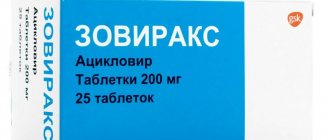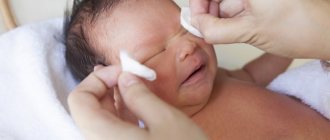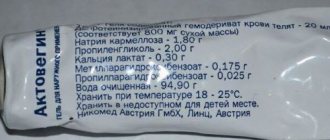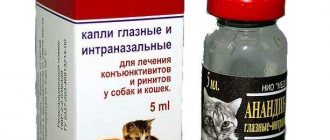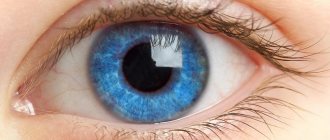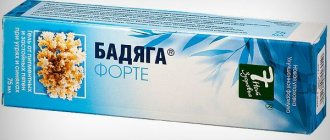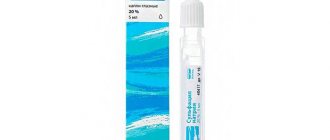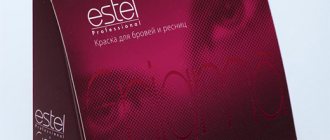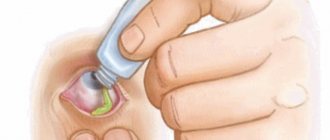Composition and effectiveness
Its formula was registered in 1970, after which its production began immediately. The basis is oxolin, a substance with a pronounced virucidal effect.
The full name is very long, and sounds like dioxotetrahydroxytetrahydronaphthalene. The ointment also contains liquid paraffin, petroleum jelly, petroleum jelly and citric acid. The drug is placed in a metal tube with a protective coating, which holds 10 grams of the mixture. In appearance, it is a translucent gel with an oily structure and a yellowish tint. At the end of the shelf life it turns pinkish.
The drug was comprehensively studied by specialists from the All-Union Influenza Research Institute and the Research Institute of Epidemiology and Microbiology in Lvov. Studies have shown that it reduces the incidence of influenza by 71%, and other viral diseases by 44.5%. Herpes viruses, papillomatosis and others were sensitive to oxolin.
The ointment has a beneficial effect on the epidermis and mucous membranes. It turns out that the scope of application of this substance is very wide.
Compound
The drug is produced in the form of an ointment with 0.25% of the active substance. It has a dense consistency and a white tint.
The therapeutic agent contains the following substances:
- tetraoxoline;
- petrolatum;
- liquid paraffin;
- lemon acid.
Once on the mucous membrane of the eye, these substances destroy viruses that cause inflammation. Tetraoxoline prevents the intensive reproduction, development and spread of viruses.
The pharmacokinetics of this drug have not received due attention because it is used externally. The drug is actively absorbed into the tissue, and only a small amount of tetraoxoline penetrates into the blood. The active substance that enters the blood is quickly excreted by the kidneys.
After applying the medicine to the conjunctival sac, the following effects are detected:
- elimination of tearing;
- relieving irritation;
- relieving itching and burning in the eyes;
- disappearance of the sensation of pain and skin hyperemia.
Oxolinic ointment for eyes
Today, not all doctors use oxolin-based gel in the fight against eye diseases. So, according to Russian and Ukrainian medical standards, the use of this substance is quite acceptable for the treatment of viral eye infections.
But in Belarus they don’t use oxolin. By the way, the instructions do not list eye diseases in the indications column. Probably, the manufacturer does not imply the use of oxolinic ointment for the eyes. Despite this, the use of oxoline for these purposes is more appropriate compared to antibiotics.
The fact is that viruses most often infect the mucous membranes of the eyes. But bacterial diseases are very rare. For example, keratitis and conjunctivitis are usually of viral origin. In this case, antibacterial agents will not provide any therapeutic effect.
Reviews of Oxolinic ointment
Generally, reviews about Oxolinic ointment are good. The drug helps with viral rhinitis, and also quite often protects against viral infections, in particular ARVI. Patients note that to achieve the effect, the ointment should be used regularly, especially during periods of increased incidence. The drug is inexpensive, easy to use, and suitable for allergy sufferers.
Among the disadvantages, possible adverse reactions are most often mentioned (in particular, a burning sensation of the nasal mucosa). Another disadvantage is the short-term action (the ointment must be applied several times a day, especially immediately before contact with sick people).
How to use oxolinic eye ointment
This question is answered in this video:
Like other ointments, it is placed in the conjunctival sac.
- Before the procedure, wash your hands thoroughly with soap to prevent the addition of germs. * Gently pull back the lower eyelid.
- Squeeze 3-4 mm of ointment into the resulting pocket.
- Release the eyelid and close your eye so that the ointment does not fall out. It is best to apply the ointment at night so that the eyes remain closed for a long time. This way the product will work for the maximum amount of time and give the best result.
You can also smear your eyes during the day; one application every 6-8 hours is acceptable. However, the greasy texture of oxolinic ointment interferes with full vision. The film covers the eyes, which is why a person sees a veil before his eyes.
The course of treatment varies depending on the degree of damage, type of virus, etc. Usually its duration does not exceed 14 days.
For the eyes, only a product with an active substance concentration of 0.25% can be used. Ointment with 3% oxolin is suitable only for the skin. These are cases of herpes zoster, herpes virus, psoriasis, papillomavirus, adenovirus.
Oxolinic ointment: a time-tested antiviral agent
A huge number of antiviral drugs are produced in tablets, suppositories, suspensions, capsules, the exception of which is Oxolinic ointment, which is also used for the prevention and treatment of antiviral and other diseases.
Oxolinic ointment consists of the active substance oxolin (dioxotetrahydroxytetrahydronaphthalene), from which the name of the product comes.
Nowadays, healing Oxolinic ointment is produced by pharmaceutical manufacturers in aluminum tubes in different volumes. 0.25% product is produced in volumes from 5 to 20 grams, and 3% – in volumes from 10 to 30 grams.
It has a white or yellowish tint, thick, homogeneous, viscous consistency.
The healing effect of Oxolinic ointment is aimed at destroying viruses that cause diseases:
- flu;
- herpes;
- chickenpox;
- ARVI;
- human papillomavirus (HPV).
Oxolin is used for local treatment of the disease, to destroy the viruses that provoked the disease. The active substance in the product blocks and destroys pathogenic particles, so they cannot further multiply and infect healthy cells, as a result of which the disease stops.
The active substance prevents the penetration of infection into cell membranes, thereby blocking the development of the disease and saving the human body from an infectious disease. Therefore, this remedy is also used for the prevention of viral diseases: ARVI, influenza, chickenpox, etc.
The active substance is a synthetic product that was invented and registered in 1970 by our pharmacists. Oxolinic ointment is widely used these days, since when it is used, viral resistance to the active substance is not observed.
It is partially absorbed into the blood and excreted throughout the day by the kidneys. When used externally, 5% of the total amount of the drug is absorbed, and when applied to mucous membranes (nose, eyes) - 20% of the total amount.
As noted above, Oxolinic ointment is produced by manufacturers in two forms (due to the % ratio of active ingredients) - 0.25% and 3%.
3% of the drug is used to cure the following diseases and conditions:
- common and flat warts;
- herpes zoster, scaly, vesicular lichen;
- herpes;
- psoriasis;
- molluscum contagiosum.
Due to the high concentration of the active substance, the drug, upon contact with viruses, neutralizes and destroys them. The use of Oxolinic ointment for the treatment of lichen is a rare occurrence, since stronger remedies for the disease have been developed, but if it is not possible to purchase them, then Oxolinic is indicated for use.
The 0.25% release form is aimed at preventing influenza, and is also used to treat infectious diseases caused by adenovirus. With this treatment, the drug of this release form is applied to sensitive areas of the body: the inner mucous membrane of the nose, eyelid and eyeball.
Scientists have proven the positive effect of using Oxolinic ointment in the fight against influenza viruses, herpes, papilloma, adenoviruses and molluscum contagiosum.
When choosing Oxolinic ointment, remember that for external application choose a 3% drug, and for mucous membranes - 0.25%.
You cannot use the 3% form in the area of mucous membranes, as this will negatively affect your health; there is a high concentration of the active substance, which is quickly absorbed into the bloodstream.
When applying 0.25% of the product externally, you will not get positive results, since the concentration of the active substance is very low.
To treat a runny nose, it is recommended to apply the drug to each nostril three times within 24 hours for 4 days. It is necessary to apply a uniform, thin layer of the product so that it does not prevent air from entering naturally.
Experts recommend carrying out this procedure with a cotton swab or a special spatula, and you need to act carefully so as not to cause mechanical damage to the mucous membrane.
Before using a medication, the use of vasoconstrictor drops is not always indicated. I only drip them if heavy nasal discharge causes severe discomfort.
In order to treat ophthalmic diseases, it is recommended to apply Oxolinic ointment with a special spatula behind the eyelid - this should be done three times within 24 hours. If the doctor has prescribed you other medications to treat your eyes, then Oxolinic ointment is applied before going to bed - once.
This procedure must be done until the eyes are completely healed. To prevent influenza, the healing agent is applied to the nasal mucosa in a thin, even layer three times a day throughout the day.
Just before each application, the nasal passages are treated with a saturated saline solution in order to remove viruses that have entered the nasal cavity.
To make this procedure easier, use cotton swabs, which can be purchased at the pharmacy. The product is applied throughout the entire period of seasonal infection, which is about 30 days.
Oxolinic ointment is applied in an even, thin layer to the problematic dermis 3 times a day. Next, apply a sterile bandage or napkin and tie it with a bandage.
In order to heal deep skin lesions, first apply a sterile napkin on top of the ointment, then cellophane, then cotton wool and wrap everything tightly with a bandage. This bandage is left for a day, and then the product is reapplied and bandaged, this is done until the dermis is completely healed.
Experts recommend using the drug for children over two years of age. This is due to the development of mucous membranes and respiratory organs in children. By the age of two, they are fully formed and easily accept fatty products.
A child under two years of age has narrow nasal passages, which are directly connected to the eyes (tear sac) and middle ear. When using Oxolin at this age, it can easily get into the ear and provoke further development and spread of a viral infection. It can also simply block the narrow passage to the ear and eyes.
For children over two years of age, doctors recommend using only the 0.25% form of the active substance to prevent viral infections and cure the runny nose.
Leave the house or three times during the day if there are sick people indoors. Moreover, before each application, be sure to rinse the child’s nose with warm water to remove the viral infection that has already entered the nose.
To treat a runny nose in a child, Oxolinic ointment is placed in each nostril three times within 24 hours for 4 days.
It is necessary to apply a uniform, thin layer so that it does not prevent air from entering naturally.
Doctors recommend carrying out this procedure with a cotton swab or a special spatula, and you need to act carefully so as not to cause mechanical damage to the mucous membrane.
Oxolinic ointment should not be used if:
- there are allergic reactions to the components in the composition,
- The child is under two years of age.
During treatment, adults should avoid drinking alcohol to avoid side effects of the drug.
Scientific studies have shown positive results when using this product for nasal and external use in the fight against viral infection due to the action of the active substance in the drug. Therefore, it is still used to treat viral infections of the eyes, nose, papillomas, and is used to prevent ARVI and influenza, etc.
To prevent and treat viral infections, use oxolin, but first consult a specialist.
The materials posted on this page are informational in nature and intended for educational purposes. Site visitors should not use them as medical advice. Determining the diagnosis and choosing a treatment method remains the exclusive prerogative of your attending physician.
Source: //allergology.ru/prostuda/maz-oksolinovaya
Is it possible to use oxolinic ointment for children?
Its effect is mainly superficial; the drug is very poorly absorbed into tissues. Therefore, its use will not adversely affect the health of even a very young child. It is undesirable and difficult to use oxolinic ointment to treat the eyes of children under two or three years of age. Children often rub their eyes; the veil of ointment brings them discomfort. But if the child tolerates this procedure without stress, the ointment can be used.
For the first time, you need to apply the ointment with caution and carefully monitor the child’s condition. Occasionally, oxolinic ointment irritates the delicate mucous membranes, which are thinner in children than in adults. The discomfort goes away after 10-15 minutes. If this causes serious discomfort to the child, it is better to choose another drug.
Oxolinic ointment to prevent infection
Leave the house or three times during the day if there are sick people indoors. Moreover, before each application, be sure to rinse the child’s nose with warm water to remove the viral infection that has already entered the nose. To treat a runny nose in a child, Oxolinic ointment is placed in each nostril three times within 24 hours for 4 days. It is necessary to apply a uniform, thin layer so that it does not prevent air from entering naturally.
Doctors recommend carrying out this procedure with a cotton swab or a special spatula, and you need to act carefully so as not to cause mechanical damage to the mucous membrane.
Contraindications for oxolinic ointment
This medication is contraindicated in pregnant women; it is especially undesirable to use it without medical supervision. In exceptional cases, if the risk is outweighed by the benefit, the doctor may prescribe oxolin to a pregnant woman, subject to constant monitoring.
There have been no studies of this drug in pregnant women, so there is no data on its effects on the fetus. Some people may experience individual intolerance to the components: oxoline and vaseline, which is an excipient.
Does oxolinic ointment for eyes have analogues?
- Oftagel is a gel keratoprotector against dry eye syndrome, bacterial and viral conjunctivitis. Accelerates the regeneration process in case of damage.
- Hydrocortisone ointment. Eliminates inflammation caused by viruses, fungi, infections, injuries, tuberculosis bacillus.
- Floxal is a product containing ofloxacin. It is considered an analogue, but is more suitable for eliminating chlamydia, mycoplasma, enterobacteria, and shigella. Eliminates blepharitis, keratitis, corneal ulcers, barley.
- Zinc ointment. Registration, anti-inflammatory, antiviral and antiseptic agent.
- Acyclovir. Another widely known antiviral agent. It is used in many fields of medicine, including ophthalmology.
Liked? Share on social networks!
Oxolinic ointment is intended to combat viral diseases.
Oxolinic ointment is an effective antiviral agent.
During viral diseases, conventional antibacterial drugs will not help you, because they do not deal an adequate blow to the viruses; in this case, we recommend using antiviral ointments.
Oxolin ointment for barley
Barley on the eyelid is a purulent inflammation of the sebaceous gland, which develops as a result of infection. The first signs of the disease are itching, soreness, redness and swelling of the eyelid. Then the inflammation is intensified with the formation of a compaction with a festering head.
Typically, barley ripens and husks on its own within 3-4 days. However, conservative treatment can significantly shorten the recovery period. Barley ointments are highly effective, they quickly help eliminate inflammation and prevent the development of secondary infection.
Popular ointments for barley
The pharmaceutical market offers a wide range of antibacterial agents, which are produced in the form of ointments for the treatment of barley. It is worth taking a closer look at the most popular and effective means.
Tobrex
Available in the form of drops and ointments, which are characterized by a mild effect on the membranes of the eye. The drug has a pronounced antibacterial effect, helps in a short time to stop inflammation, eliminate itching and swelling of the eyelid. Using the ointment allows you to double the healing process.
Tobrex is the only drug that can be prescribed to children from birth. The medicine is commercially available, but before using it, you must consult a doctor.
Levomekol ointment
The drug is a complex drug containing chloramphenicol and methyluracil. The ointment is widely used in the treatment of stye and other eye diseases of an infectious nature, and for burns. A small amount of the product should be applied under the damaged eyelid.
The drug should not be prescribed if you are intolerant to the ingredients of the ointment. During pregnancy and lactation, Levomekol can be used, but after examination by an ophthalmologist. The drug is usually well tolerated, but local allergic reactions are possible.
Blefarogel
In addition to antibacterial agents, Blefarogel is used in the treatment of styes on the eye.
The product was created using hyaluronic acid and aloe extract, therefore it has an antiseptic and anti-inflammatory effect and effectively cleanses the mucous membrane of the eyelid.
A small amount of Blefarogel must be applied to a sterile swab, then rubbed into the inflamed area in a circular motion.
Ointments for barley allow you to quickly and effectively stop inflammation and eliminate unpleasant symptoms. The advantages of this form are a prolonged therapeutic effect, which allows you to halve the recovery time.
But before using any drug, you should consult a doctor to prevent the development of unwanted effects.
The appearance of stye on the eye causes a lot of inconvenience. The disease is accompanied by an inflammatory process, swelling of the eyelid, redness, soreness, and the formation of a boil with purulent contents. Physical discomfort from barley is accompanied by psychological discomfort due to a noticeable cosmetic defect. Ointment is one of the first aid remedies for stye on the eye.
The main active ingredients in ointments are antibacterial agents, which have a pronounced anti-inflammatory effect, which allows you to get rid of the disease in the shortest possible time.
Treatment with ointments: advantages and disadvantages
Barley ointment is used in combination with drops or a separate product. It is especially convenient to use this dosage form for internal inflammation of the eyelid, meibomitis, when the stye is located in the orbit.
In this case, the medicine is placed behind the lower eyelid, evenly distributed over the site of infection and quickly absorbed. This method of application has an immediate effect on the causative agent of barley - this is Staphylococcus aureus or demodex mite. The affected eye receives the required dosage of medication in the shortest possible time, which contributes to the rapid resolution of the disease.
Source: https://resart.ru/maz-oksolin-pri-yachmene/
Effect of the drug
One of the representatives of antiviral drugs is oxolinic ointment; most people have already encountered the use of ointment for preventive purposes in the nasal area to prevent the proliferation of infections in the nasopharynx, avoiding a cold. But oxolinic ointment also has other properties – medicinal ones.
In order to correctly apply and eliminate viruses, you need to know how to apply the ointment correctly, how to determine the dosage and course of treatment, we will tell you about this in this article.
Oxolinic eye ointment instructions for use
Oxolinic ointment is a synthetic drug, the active component is oxolinum, has an antiviral effect, is effective against herpes, adenoviruses, and influenza.
The components of oxolinic ointment enter the tissues at the moment of contact with the active substance, destroying viruses.
Several different types of ointment are produced, the difference between them is in the percentage of the active component.
For use on the mucous membranes of the eye, use only 0.25% ointment.
It is better to store the ointment at a temperature no higher than ten degrees in the refrigerator.
Do not give to children.
Oxolinic ointment: indications for use, instructions, composition
The drug is prescribed for the treatment of eye diseases of viral origin. After all, adenoviruses, like influenza viruses, are often accompanied by acute conjunctivitis.
Composition and mechanism of action for eye diseases
Eye gel 0.25% contains 2.5 mg of active substance per gram. Composition of Oxolinic ointment:
- active substance – dioxotetrahydroxytetrahydronaphthalene;
- auxiliary components (liquid paraffin, petroleum jelly, citric acid).
The product is used in adults and children for ophthalmological problems. The action of Oxolinic ointment is to block the cell membrane, which prevents the penetration of viruses.
The instructions for use included in the Oxolin package contain the following information about the therapeutic effects of the ointment:
- eliminates burning and itching of the eyes;
- removes symptoms of inflammation, redness of the sclera;
- reduces excessive lacrimation;
- relieves pain.
After being placed in the lower eyelid, 20% of the substance enters the eye. The peculiarity of the drug is that it does not penetrate into the blood. Because of this, the gel does not have a toxic effect on the body.
Release form
The structure of the ointment is a cloudy gel with a whitish-gray tint, which turns pink when stored open. The drug Oxolinic ointment for eyes is packaged in aluminum tubes of 5 or 10 g, which are coated on the inside with a protective layer.
Externally applied 3% ointment, placed in tubes of 10, 25 or 30 grams. One gram of this product contains 30 mg of active substance.
Indications and contraindications for using eye ointment
The drug is prescribed by doctors and used by the population during an outbreak of seasonal viral infections to prevent influenza. Lubricating the nasal cavity prevents the spread of the virus to the organs of vision.
In addition to alleviating the symptoms of eye diseases, Oxolinic ointment has the following indications for use:
- flu;
- adenovirus;
- conjunctivitis;
- barley;
- blepharitis;
- keratitis;
- inflammation of the eyelids
For conjunctivitis, Oxolinic ointment is used in some cases at the discretion of the doctor. Bacterial inflammation of the mucous membranes of the eyes requires the use of antibiotics. Oxolinic eye ointment will complement complex therapy.
Contraindications for Oxolinic ointment in most cases are limited to individual intolerance to the active substance or constituent ingredients. In case of an acute allergic reaction, rinse your eyes with warm water and consult an ophthalmologist.
Directions for use and dosage for eyes
In many ways, the result of treatment depends on the patient’s compliance with general hygiene. The product cannot be rubbed in, because it will distribute itself throughout the mucous membranes of the eye.
It is recommended to perform the following sequence of drug administration into the lower eyelid:
- Immediately before use, wash the eyes with boiled water.
- Discharge from the inner corners is removed with a cotton pad soaked in chamomile decoction.
- By retracting the lower eyelid, 0.2 g of the drug is injected into the conjunctival sac, which is equivalent to 1 cm of squeezed tape.
- After application, it is recommended to close your eyes and not blink for 1 minute.
For adenovirus or influenza, the ointment is applied 5 times during the day. For patients with viral diseases, frequent use will help eliminate symptoms of irritation. The duration of treatment is determined by the ophthalmologist depending on the overall clinical picture. Usually standard therapy lasts 5 days, but sometimes the course is extended by the doctor to 1 month.
Use in special patient groups
Oxolinic ointment is prescribed to children and women during the pre- and postpartum period according to a doctor’s prescription and is used strictly according to the instructions. Precautionary measures will eliminate unwanted consequences of use in the form of allergies.
Children
The annotation attached to the package clearly indicates at what age the drug can be used. It is prescribed to children after two years of age. For infants, oxolinic ointment is used only in special cases and under the supervision of a doctor.
Pregnant and nursing
The instructions for use warn that pregnant women may develop complications due to taking the ointment. Therefore, during pregnancy, the drug should not be used unnecessarily. The same applies to women who are breastfeeding.
Interaction with other drugs
The ointment cannot be combined with some medications. For example, when used together with adrenergic agonists (Clonidine, Xylene, Nazolin), dry eyes increase.
Before using the drug, lenses should be removed half an hour. After application, you need to wait 15 minutes until the active substance is completely absorbed, and then insert the lenses back.
How to store
The shelf life of Oxolinic ointment is 2 years. To prevent side effects and ensure effective action, Oxolinic ointment should be stored at a temperature not exceeding 10 °C. It is best to place the drug in the refrigerator.
In closed packaging and subject to proper conditions, the shelf life is extended to 3 years.
about how to use eye ointment
Source: https://okulist.pro/preparaty/mazi-dlya-glaz/oksolinovaya.html
Special instructions for use
The ointment should be applied to the conjunctival sac, up to two grams.
Apply within 24 hours 5-6 times a day.
The duration of treatment is at least 5 days.
In the case of prophylactic use, it is allowed to be used for 30 days in the fight against influenza.
Results depend on compliance with all doctor's instructions and recommendations.
After using the ointment, do not rub it with your fingers.
Oxolinic ointment is familiar to everyone since childhood. You can smear your nose with it to prevent ARVI and influenza, but this is not the entire list of indications for use.
Reviews
Raisa: I used oxolinka to treat allergic conjunctivitis. I put a small amount of ointment into the conjunctival sac 4 times a day for 5 days. As a result of this treatment, my conjunctivitis symptoms completely disappeared and my vision improved significantly. There were no side effects during therapy.
Olga: After I was exposed to a draft, my eyes began to water, and my visual acuity noticeably decreased. Inflammation of the conjunctiva was treated with Oxolinic ointment. The drug was placed into the conjunctival sac in both eyes 5 times a day. In just 4 days, I managed to completely get rid of the symptoms of eye inflammation: the pain and pain were no longer bothersome. There were no side effects during treatment.
Irina: Oxolinic ointment did not help me. I used it in the quantities and frequency prescribed by the ophthalmologist, but even after 2 days there were no noticeable results of treatment. The doctor prescribed an analogue of this drug - Florenal. The medicine helped: on the 5th day of the therapeutic course, the manifestations of conjunctivitis disappeared. There were no side effects from drug treatment.
Oxolinic ointment - description
Oxolinic ointment
– a local antiviral agent that contains 0.25% of the active substance – dioxotetrahydroxytetrahydronaphthalene (oxoline). In appearance, the product has a white or yellowish color, translucent, and during long-term storage it may acquire a slightly pinkish tint (this is normal).
Among the excipients it should be noted:
This product is a nasal (eye) ointment, its price ranges from 50 to 120 rubles, which depends on the manufacturer.
Currently, the ointment is produced by various pharmaceutical companies, including Altaivitamins
", "
Green Dubrava
", "
Pharmtechnologies
", "
Nizhpharm
". Much less common in pharmacies is Oxolinic ointment 3 percent (Oksolin-3) for external use, its price is about 150 rubles.
Both types of ointment can be used on the skin of the body and face, and only 0.25% is used on mucous membranes. The drug is available in tubes of 5-30 g, which are packaged in cardboard boxes.
Oxolinic eye ointment: composition, indications and contraindications, rational dosage regimen
During the spring-autumn months, many viruses and pathogenic bacteria are common. Microorganisms and infections not only affect the upper respiratory tract, but also provoke inflammatory processes in the organs of vision - keratitis, conjunctivitis of various natures.
To treat the organs of vision, it is recommended to use an antiviral drug – Oxolinic ointment.
Composition of the drug and release form
The composition of Oxolinic ointment includes the active ingredient - dioxotetrahydroxytetrahydronaphthalene (oxolin). Additional products include petroleum jelly, liquid paraffin and petroleum jelly. Citric acid present
The drug is sold in an aluminum tube, coated on the inside with a special protective coating. The tube contains 10 grams of product, 0.25%, or 3% consistency. In ophthalmic practice, 3% ointment is more often used.
In appearance, the ointment is a thick gel, cloudy in color with a yellowish tint. When stored open for a long time, the consistency changes color to pink.
How does this medicine work?
The main effect is aimed at destroying viral particles
The principle of the effect of medicinal ointment is based on the establishment of a block. The gel prevents bacteria and viral infections from penetrating the membrane of the visual organs.
When placing the ointment into the conjunctival sac, the following effects are observed:
- Eliminates excessive tearing;
- irritation subsides;
- itching and burning in the eyes disappears;
- the feeling of pain disappears;
- hyperemia of the skin disappears.
A special feature of the drug is the almost complete absence of absorption into the eye cavity. 20% of the active substance penetrates the mucous membrane of the eyeball.
The active ingredient does not penetrate into the circulatory system through the capillaries in the eye. Therefore, it does not cause intoxication of the body.
Thus, a positive effect on the visual organs is manifested as a result of the correct dosage. If there is no mechanical or other kind of damage on the surface of the eyeball, then no adverse effects or serious complications arise during use.
Directions for use and doses
After applying the ointment, you need to close your eye for one or two minutes and not blink.
The recommended dosage for putting into the eye is 0.2 g. ointments. The volume of consistency is equal to the diameter of the match head. The maximum permissible use of the gel is up to 5 times per 24 hours per day. Frequent use is necessary to relieve symptoms.
The duration of therapy is determined by the attending physician, based on the tests performed and the results obtained. In addition, the doctor is guided by the degree of the disease.
The minimum period of use of the product is at least 5 days. If necessary, Oxolinic ointment is applied for up to 30 days, as prescribed by an ophthalmologist.
The result obtained depends on how often and correctly the ointment was used. Before use, eyes are washed with boiled water. Accumulated secretions are removed from the corner of the eye. The procedure can be performed using a cotton pad soaked in a decoction of medicinal herbs that have anti-inflammatory properties, or an antiseptic.
The product is placed behind the lower eyelid. After applying the ointment, you need to close your eye and not blink for 1 minute.
There is no point in rubbing or doing anything to enhance absorption. The medicine will be distributed independently and in the required volume over the surface of the eyeball.
Contraindications to Oxolinic ointment
Oxolinic ointment is not recommended for use if a person has an individual intolerance to the main component or auxiliary ingredients.
In addition, an allergic reaction may occur in the form of redness of the eyes and skin. If discomfort occurs, it is recommended to pause therapy and seek advice.
Use during pregnancy and in children
During pregnancy and while feeding your baby with breast milk, you should not add ointment unnecessarily. Only after a strong recommendation from a doctor.
There are no special contraindications for use. This is due to the fact that the drug does not penetrate the systemic circulation. Therefore, the drug has no effect on the developing fetus.
For young children there are restrictions for use - up to 2 years. But if necessary, the dosage is reduced and used for infants. Application is carried out only under the supervision of medical personnel.
Interaction with other drugs
Be sure to inform your doctor about all medications you are currently using.
Oxolinic ointment does not always come into normal contact with other drugs. When interacting with adrenergic drugs, dryness of the mucous membrane of the eyes occurs.
If you need to use it for a child, you should make sure that the baby tolerates the ointment normally and does not have any allergic reactions.
If a person uses soft contact lenses, then before using Oxolinic eye ointment, the lens should be removed 30 minutes before the procedure. After applying the gel, it is recommended to wait 15-20 minutes for the active substance to be completely absorbed. Then return the lenses to their place.
If side effects do not go away within 1-2 days or worsen, then treatment should be stopped and immediately consult a doctor to select similar medications.
Reviews about the drug
Irina: “I use Okolin ointment for any conjunctivitis. The product helps me almost immediately. Within a day, the inflammation and redness subsides, and the eyes stop sticking together in the morning. I’m satisfied with the effect of the product - it’s always in the first aid kit just in case.”
Konstantin: “Oxolinic ointment did not help me. I put it in at the time prescribed by the doctor, but there was no particular result, so I had to switch to its analogue, Florenal.”
Antonina Sergeevna: “I am a pensioner, I have always had problems with my eyes - with any cold, inflammation began. I suffered for a long time until I found Oxolinic ointment for myself. It gently relieves all signs of a cold and eliminates inflammation. Sometimes I may get a slight rash near my eyes, but it goes away quickly. In addition, the drug is inexpensive and is always available in the pharmacy.”
Analogues of Oxolinic ointment
Substitutes do not exactly replicate the composition, but act similarly
If contraindications are identified or increasing side effects appear, the ophthalmologist may recommend replacing the original with a similar medication. The following drugs with a similar spectrum of action are distinguished:
- Tebrofen ointment.
- Interferon.
- Florenal.
These drugs fully perform all the functions of Oxolinic ointment. Therefore, their use is possible in case of problems during treatment with the original.
Thus, Oxolinic ointment is used for the organs of vision in diseases of a viral nature. It is approved for children from 2 years of age and during pregnancy. Its effect does not extend to the blood circulation, therefore no intoxication is detected during use.
The doctor talks about the treatment, prevention and symptoms of herpes in the video below:
Select it and press Ctrl+Enter to let us know.
Source: https://glaza.online/antivir/virulicide/oksolinovaya-maz-dlya-glaz.html
Effect of the ointment
Active component oxolin
– an antiviral agent of the first generations, which has not lost its effectiveness.
It gives especially good results when in contact with influenza viruses (mainly type A), as well as with ARVI pathogens:
- rhinoviruses;
- adenoviruses;
- parainfluenza, etc.
The drug has a local (local) effect, but its mechanism of action is similar to that of systemic antiviral drugs. The ointment is applied to the areas where the virus penetrates first (nose, eyes, epidermal cells). Oxolin is capable of disrupting the natural reproduction process of viruses, since it blocks viral proteins on the surface of cell membranes.
The drug prevents the binding of viral particles to cell membranes, thereby preventing infection from entering the general bloodstream.
Oxolin is also highly active against the herpes simplex
, both types 1 and 2. It is also effective against the varicella zoster virus, which can also cause herpes zoster. HPV (human papillomavirus) is also sensitive to this pharmacological agent, as is the molluscum contagiosum virus.
The drug is non-toxic, if used according to the instructions, it will be absorbed into the general bloodstream in a minimal amount (less than 15% when applied to mucous membranes, less than 5% when applied cutaneously). The ointment does not have a cumulative effect, so it must be used at regular intervals. It does not irritate tissues and completely leaves the body within 24 hours (excreted by the kidneys).
Side effects
In case of adverse reactions, you can select analogues of oxolinic ointment.
Side effects include the appearance of:
- itching in the eyes and nose;
- nasal discharge;
- irritation, sneezing and skin rashes;
- a short burning sensation in the area where it was applied.
In rare cases, redness of the mucous membrane may occur. If all these phenomena pass over time, then the remedy should not be canceled. However, it must be borne in mind that if they are severe and persist for a long time, you must stop using this ointment.
Instructions for treatment and prevention
The drug can be used in children and adults. To prevent infection with ARVI, you need to apply a thin layer of the product to the mucous membrane of the nasal passages. It is enough to carry out such therapy 2-3 times a day, the course is for the duration of the influenza epidemic (usually 1-2 months). If you already have a viral runny nose, start treatment immediately after identifying the first signs. In this case, you need to use the product four times a day with a course duration of 5 days.
Before contact with infected flu, you need to use Oxolinic ointment, applying it to the nasal mucosa in a thicker layer, and after stopping communication, rinse your nose.
To treat viral pathologies of the organs of vision, special rules must be followed.
Here are the main recommendations:
- it is necessary to put the ointment behind the eyelids;
- rate of use – twice a day;
- course of treatment – up to 14 days.
Chickenpox therapy is more often carried out in children if there are large rashes and poorly epithelial vesicles. They are lubricated with the product 2-3 times a day using a cotton swab. For herpes zoster, it is advisable to use Oxolinic ointment 3%, applying it to the affected areas up to 4 times a day for 2-4 weeks. For lichen, they are treated three times a day for up to 2 months.
Useful video
You can learn useful information about the treatment of inflammation of the conjunctiva from the following videos:
Oxolinic ointment is an effective remedy for the treatment of viral eye pathologies. By using it as prescribed by a doctor, you can achieve recovery. Undesirable effects from treatment are rare.
Was the article helpful?
Rate the material on a five-point scale!
If you have any questions or want to share your opinion or experience, write a comment below.
Contraindications and side effects
Pregnancy and lactation are not on the list of strict contraindications to the use of the product. Detailed studies on the effect of oxoline on the fetus have not been carried out, but this substance does not have a toxic effect on the tissues of an adult or child and is absorbed into the systemic bloodstream in rather small quantities. Therefore, it is possible to use the ointment during pregnancy and lactation, but according to strict indications.
For children under one year old, pediatricians also often recommend applying ointment to the nasal mucosa to prevent influenza. This should be done with caution so that the viscous ointment does not get into the baby’s respiratory tract or throat! Contraindications in childhood and adulthood – cases of allergies, intolerance to the components of the drug.
Side effects may include:
- a short burning sensation in the nose or other area where the ointment was applied;
- nasal discharge, sneezing, watery mucus;
- skin rashes, irritation, redness of the mucous membrane (rare);
- itching in the nose, in the eyes.
Transient phenomena do not require discontinuation of the drug, but their prolonged existence and serious severity necessitate discontinuation of therapy or prophylaxis.
Contraindications
The list of strict contraindications to the use of the drug does not include pregnancy and breastfeeding. Although detailed studies have not been carried out on the effects of the ointment on the fetus and it is noted that the active substance is not toxic to the adult body, it can still be absorbed into the blood in small quantities. Therefore, you can use this remedy only according to the strict indications of a gynecologist and therapist.
Contraindications are allergies and individual intolerance to the components that make up this medicine.
Analogues and other information
Other drugs in the form for external use with antiviral action are given in the table.
| Medicine | Active composition | Price, rubles |
| Alpizarin ointment | Tetrahydroxyglucopyranosylxanthene | 160 |
| Acyclovir | Acyclovir | 50 |
| Panavir | Potato shoot extract | 210 |
| Viferon-ointment | Interferon-alpha-2 | 200 |
| Infagel | Interferon-alpha | 120 |
| Virosept | Sea buckthorn oil, celandine, zinc | 130 |
If you apply the product to the mucous membranes in an excessively thick layer, a strong burning sensation and frequent sneezing may occur.
In this case, you need to wash off the medicine with saline solution or plain water. When using the ointment internally, you must rinse the gastrointestinal tract and give sorbents to the victim. With intranasal administration of Oxolin simultaneously with local adrenergic agonists (vasoconstrictor drops, sprays), excessive nasal dryness may develop.
Oxolinic ointment for barley on the eye
> Eyes
05.02.2020
Oxolinic ointment is an effective and inexpensive antiviral agent. The drug occupies a special place in the family medicine cabinet. This is one of the best safe medications for flu prevention. It is no less often used for the eyes.
A product based on oxaline was registered back in 1970. The drugs Tetraxolin and Oksonafthylin based on it appeared a little later in 2008 and 2006. The drug is unique in its virucidal effect, which applies to different strains of viruses.
The drug has a beneficial effect on the mucous membranes, which is why it is used in otolaryngology and ophthalmology.
Comments
- megan92 () 2 weeks ago
Has anyone managed to get rid of papillomas in their armpits? They really bother me, especially when you sweat.
- Daria () 2 weeks ago
I have already tried so many things and only after reading this article, I was able to get rid of papillomas in the armpits (and on a very budget). PS But I’m from the city myself and didn’t find it on sale here, so I ordered it online.
- megan92 () 13 days ago
Daria, post a link to the article! PS I'm from the city too))
- Daria () 12 days ago
megan92, that’s what I wrote in my first comment) I’ll duplicate it just in case - a link to the article.
- Sonya 10 days ago
Isn't this a scam? Why do they sell on the Internet?
- Yulek26 (Tver) 10 days ago
Sonya, what country do you live in? They sell it on the Internet because stores and pharmacies charge outrageous markups. In addition, payment is only after receipt, that is, they first looked, checked and only then paid. And now everything is sold on the Internet - from clothes to TVs and furniture.
- Editor's response 10 days ago
Sonya, hello. This drug for the treatment of papillomavirus infection is indeed not sold through pharmacy chains and retail stores in order to avoid inflated prices. As of today, you can only order on the official website. Be healthy!
- Sonya 10 days ago
I apologize, I didn’t notice the information about cash on delivery at first. Then everything is fine if payment is made upon receipt.
- Margo (Ulyanovsk) 8 days ago
Has anyone tried traditional methods to get rid of warts and papillomas?
- Andrey A week ago
I tried to burn off a wart on my head with vinegar. The wart really went away, only in its place there was such a burn that my finger hurt for another month. And the most annoying thing is that after a month and a half, two more warts popped up nearby ((
- Ekaterina A week ago
I tried to burn out the papilloma with celandine, but it didn’t help, it just turned black and became so scary (((
- Maria 5 days ago
I recently watched a program on Channel One, they also talked about this PAPIFEX. Many doctors recommended for treatment. I ordered it, I use it, and indeed, the papillomas are dissolving one by one, there are only 2 left, the most tenacious ones.
- Elena (dermatologist) 6 days ago
Maria, soon these two will disappear too!
- Alexandra (Syktyvkar) 5 days ago
A good product, completely worth the price. I have never seen any analogues.
- Maxim Today
Has anyone tried to reduce papillomas with liquid nitrogen?
- Tatyana (Ekaterinburg) Today
Yeah, you burn one, after a month three more grow ((I don’t recommend liquid nitrogen, although hospitals often use it
- Elena (dermatologist) 6 days ago
Tatyana, liquid nitrogen is a thing of the past, now PAPIFEX is used in full and there is no need to go to the doctors!
- Mikhail (Moscow) Today
PAPIFEX also helped (I ordered it according to the advice above), it should work, try it
- Vika (Ekaterinburg) Today
That's great! I need to order, otherwise I’m already tormented with these warts! After all, a woman always wants to be beautiful!
- Kristina (Minsk) Today
I had papillomas removed with a laser, quickly and without pain. But it's damn expensive.
Which ointment for stye on the eye is more effective?
The danger of stye on the eye is often underestimated. Many people try to get rid of it exclusively using folk methods. And this is fundamentally wrong.
Barley is an inflammation of the hair follicle of the eyelash or the sebaceous gland located next to the eyelash bulb. Initially, swelling and slight edema appear on the eyelid.
After a few days (from 2 to 4), the yellowish head of the abscess ripens.
The greatest danger of the disease is that this abscess will burst and pus will fill the conjunctival sac. The causative agent of the disease is most often staphylococcus.
And it is impossible to defeat him with tea leaves or urine. Incorrect treatment only makes the problem worse.
If such a pathology appears, you should immediately consult a doctor so that he can select the most effective ointment for barley on the eye.
The effectiveness of treating barley with ointments
This dosage form works best on the abscess. The ointment destroys harmful microflora, specifically combating the causative agent of the disease. The abscess matures over time, and the pus breaks out. The product prevents infection of other tissues.
It envelops the abscess, acting as a protective barrier against pus. If you do not use medicine and try to squeeze out the abscess, you can seriously harm yourself. Pure pus will spread over the eyeball and conjunctival sac.
Because of this, phlegmon of the eyelid, meningitis and abscess can develop.
Not all ointments can give a positive result during treatment. Therefore, it is important to consult a doctor in time and get tests done. A swab from the conjunctiva will help determine the causative bacteria.
Also, the cause of the appearance of stye on the lower eyelid can be problems with the endocrine system, digestive organs, and even the presence of worms and mites.
Based on the test results, the doctor will select exactly the ointment that will be most effective in each individual case.
Treatment should be started as soon as possible when the following symptoms appear:
- redness and swelling of the eyelid;
- thickening of the skin near the eyelids;
- itching, burning sensation, pain when blinking;
- high fever, headache, swollen lymph nodes.
Monitor your health carefully. The most common side effects of ointments are skin rashes, increased itching, and a decrease in hemoglobin (anemia) or white blood cell count (leukopenia).
How to smear stye on the eye of adults
Such drugs are local agents. They fight infection and relieve unpleasant symptoms on the eyelids. Formulations for adults are more effective. This is ensured by an increased amount of active ingredient in the composition. Therefore, they are not recommended for small children.
Tetracycline ointment
Has an antibacterial effect. Quickly heals the skin after the abscess has opened. The drug is applied to the upper or lower eyelid up to five times a day until the pus breaks out. After this, treatment continues for a couple more days.
Tetracycline ointment is used only as prescribed by a doctor and for no longer than three days. This is a very strong drug. If the disease is viral or fungal in nature, this remedy is contraindicated.
It should also not be used by pregnant and lactating women and children under five years of age.
Side effects from this eye ointment are recorded extremely rarely. In some cases, stomach upset and allergies may bother you. With a fungal infection of the eyes, a rapid deterioration in health is possible. Follow the rules for storing the ointment.
Floxal ointment
Successfully affects the most common microorganisms. Pharmacies sell 3% of the drug. The main component is ofloxacin (belongs to antibacterial agents). It is better not to use this drug for people with liver and kidney disease. Prescribed in parallel with complex treatment of barley (diet, physiotherapy). Additionally, the doctor may prescribe various injections.
Floxal is very effective. When used twice a day from the very beginning of the disease, the barley goes away in a maximum of four days.
Some patients may experience dizziness and excessive lacrimation, fear of light, and increased swelling.
When treating with this ointment, it is forbidden to be in the open sun (in extreme cases, you must wear dark glasses). When putting Floxal in, you should remove your contact lenses.
During the treatment period, you should refrain from driving a car. Slight incoordination, blurred vision, and distortion of some colors may occur.
Levomekol
Refers to combination drugs. Affects staphylococci. Due to the presence of two active substances (chloramphenicol and methyluracil), it penetrates deeply into the affected tissues, promoting their rapid healing.
This ointment is not recommended to be placed in the conjunctival sac. It is better to use sterile cotton swabs or disks. Levomekol is applied to them, and then applied to the abscess for strictly one hour.
The procedure is carried out no more than twice a day.
When prescribing, the ophthalmologist must indicate the dosage of the drug (1 or 5%). Individual intolerance to the main active ingredients may occur. Levomekol is a synthetic agent, but its action is identical to chloramphenicol.
Syntomycin ointment
This is a form of chloramphenicol. Kills staphylococcus. But this product must be used carefully. It contains 10% antibiotic, whereas in ophthalmic ointments this figure does not exceed 1%. Under no circumstances should it be used during pregnancy or treated in infants.
The dosage is determined only by the ophthalmologist. The active substance may cause allergic reactions. Also at risk are people suffering from psoriasis, eczema and bleeding. Some patients experienced irritation of the upper and lower eyelids and decreased levels of white blood cells, platelets and hemoglobin.
A secondary fungal infection may develop.
Acyclovir
It is a narrow-spectrum antiviral agent. Used mainly for the rapid treatment of chickenpox and herpes. In ophthalmology, 3% Acyclovir is used. The ointment is applied in a thin strip under the eyelid. You need to wait four hours between procedures. Treatment lasts from five to eight days. It all depends on the severity of the disease.
In very rare cases, itching and peeling of the skin occurs. There are cases of individual reactions to acyclovir. As a rule, the unpleasant sensations go away on their own as soon as the use of the ointment is stopped.
Erythromycin ointment
Relieves inflammation and fights bacteria. A very strong drug. Improvements can be noticed already in the first day. However, it is not recommended to arbitrarily shorten the period of treatment at home.
Only if there is intolerance to erythromycin. You cannot take other antibiotics at the same time. This will reduce the effectiveness of the ointment. The medicine is placed under the eyelid three to five times a day.
People with liver disease should consult a doctor.
Ichthyol ointment
This is a strong local antiseptic. It not only reduces inflammation but also relieves pain. Apply a thin layer to the abscess without rubbing. The maximum concentration of ichthyol for the eyes is not higher than 10%. The drug should not come into contact with eyelashes and mucous membranes. If you don't follow this rule, you will get burned.
Vishnevsky ointment
The drug is based on natural ingredients. Consists of xeroform, birch tar and castor oil. However, you should not use it yourself. The individual dosage should be calculated by a doctor. Under no circumstances should the ointment be allowed to come into contact with the mucous membranes or cornea of the eye. Natural substances also cause allergies.
Ointments for children
Treatment of barley in children should be effective, but with minimal stress on the child’s body. Read the instructions carefully, they indicate age restrictions for children. You can use any ointments only after visiting an ophthalmologist.
Treatment of barley in infants should be carried out under constant medical supervision. No dubious folk remedies. Pus is no joke. Therefore, you should not waste precious time and use ointments or drops without permission.
Hydrocortisone ointment
Belongs to the group of hormonal ointments. However, it practically does not enter the blood, and therefore does not affect the endocrine system. The product not only fights inflammation, but also relieves allergic reactions.
You cannot use this ointment and take antihistamines or antipsychotics at the same time. Hydrocortisone reduces the effectiveness of procedures using silver and mercury.
If a child has high blood sugar or problems with blood pressure, this may be a contraindication to the use of the ointment.
Levomycetinic
In ophthalmology, a 1% drug is used. A single dose for children should be less than for adults. The product is not recommended for children under three years of age. Be sure to consult your doctor before use. There have been cases where suppression of bone marrow hypoplasia was observed. Overdose impairs vision. In some cases, it comes to complete blindness.
Use of drugs with antibiotics
Not every antibiotic ointment is used to treat the eyes. What is suitable and what is not, only a specialist can say. First, tests are done. They help determine the type of bacteria. Only on the basis of this data can you select the antibiotic that will act specifically on them. Otherwise, you can get unwanted complications and kill beneficial microflora in the body.
An incorrectly chosen concentration of the active substance can also cause harm. We are talking about the mucous membranes of the eye and the thin sensitive skin of the eyelids. Therefore, you should be careful. The same applies to ointment dosages.
Antibiotic allergies have become common in recent years. It is advisable to conduct allergy tests before using the drug, this is especially important when treating children.
How to apply eye ointments
The main rule of such a procedure is hygiene. Before carrying out manipulations, you must wash your hands well.
There are two ways to apply eye ointments:
- Under the eyelid. Keep your head thrown back. Pull back the lower (or upper) eyelid. Squeeze out a little ointment, usually no more than a centimeter strip. Carefully place the ointment into the conjunctival sac. Close your eyelids and move your eyeballs. This will ensure the medicine is evenly distributed.
- Using cotton pads. You can also use a sterile bandage. A little ointment is squeezed onto it and carefully applied to the external abscess. There are certain ointments that are prohibited from being placed under the eyelids. They can only be anointed on the outside.
Barley is very common in both adults and children. To prevent this unpleasant disease from bothering you, maintain eye and hand hygiene, strengthen your immune system, avoid drafts, and never self-medicate. Pus in the eye is very serious. Be attentive to your health and approach treatment responsibly.
Source: https://oculistic.ru/bolezni/yachmen/samye-effektivnye-mazi-ot-yachmenya-na-glazu
